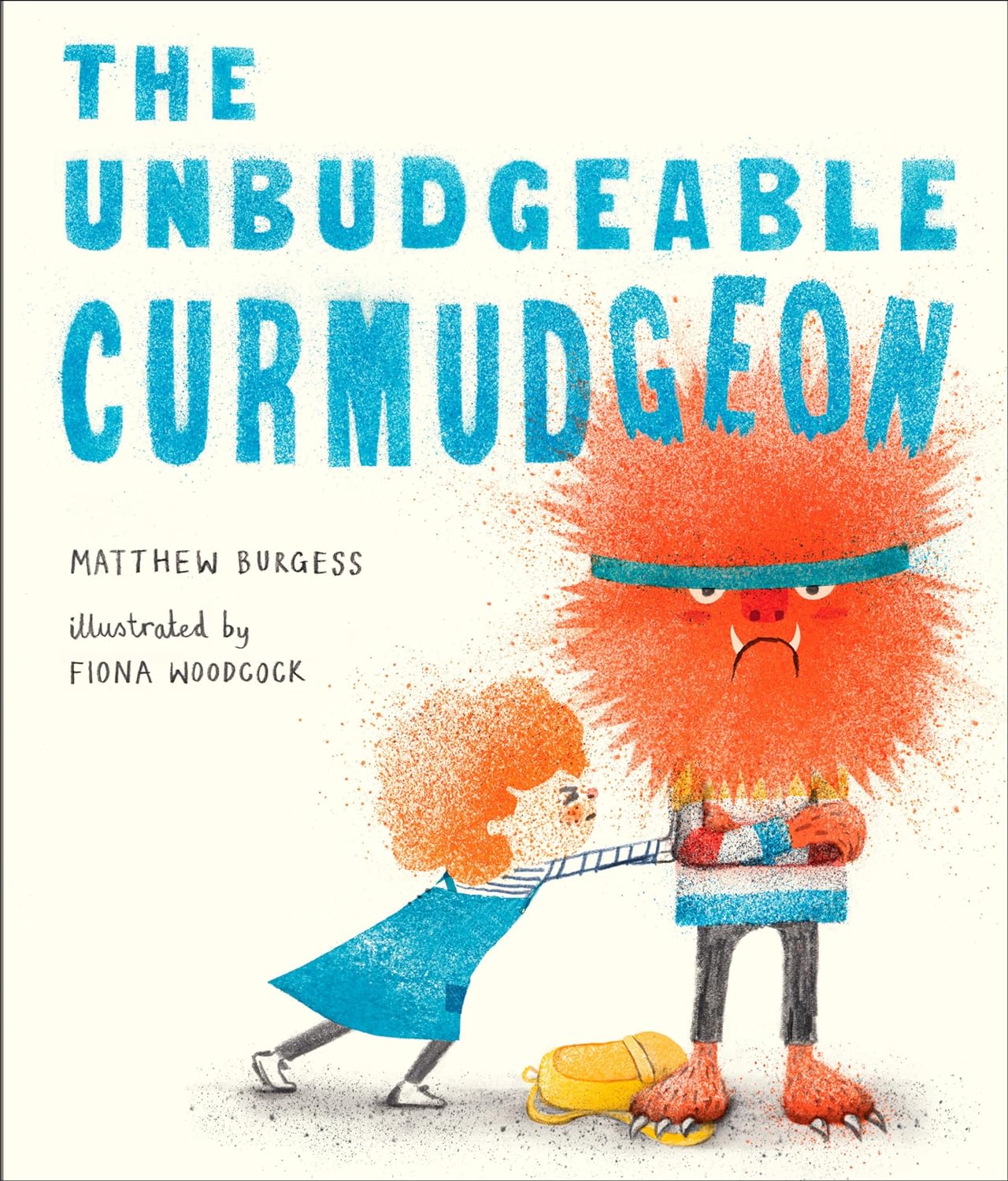SEL Read Aloud: The Unbudgeable Curmudgeon by Matthew Burgess

Summary
“The Unbudgeable Curmudgeon” by Matthew Burgess explores whimsical strategies for dealing with stubbornly grouchy characters. The narrative suggests various techniques, from asking, distracting, and offering treats, to more drastic measures like getting them in trouble or even considering a “humongous nudge.” Yet, the book warns against actions that might worsen the curmudgeon’s mood, like the potential effects of sugar or the futility of joining their grouchiness. Solutions such as trading places, giving hugs, reading together, or playing a favorite song are also offered as ways to soften the curmudgeon’s stubborn stance.
Comprehension Questions
Six questions aligned to Bloom’s taxonomy for teacher’s to evaluate students’ comprehension
- Remembering: What are some of the things offered to the curmudgeon to make him budge?
- Understanding: Interpret the meaning of “if you can’t budge ’em, join ’em.”
- Applying: Choose a strategy from the book and explain how you would implement it in real life.
- Analyzing: Differentiate between actions that could worsen the curmudgeon’s mood and those that might improve it.
- Evaluating: Judge the morality of trying to change someone’s mood against their will, even if they’re being a curmudgeon.
- Creating: Invent a story where a new character successfully budges a curmudgeon using an unmentioned strategy.
CASEL Discussion Questions
Five questions aligned to the CASEL competencies for teachers to foster an engaging discussion and foster social-emotional learning
- Self-Awareness: What can the curmudgeon learn about himself through the attempts of others to budge him?
- Self-Management: What strategies could the curmudgeon use to manage his mood or openness to change?
- Social Awareness: Why is it important to consider the curmudgeon’s perspective before trying to budge him?
- Relationship Skills: What does the book suggest about the importance of communication in relationships, even with a curmudgeon?
- Responsible Decision Making: When choosing how to interact with the curmudgeon, how can you make decisions that respect both your needs and his?
Design Thinking Challenge
Take students’ learning even further by incorporating the Imagineerz design thinking framework
Create a Mood Improvement Machine for the Curmudgeon
Understand
- Begin by reading “The Unbudgeable Curmudgeon” by Matthew Burgess. Discuss the concept of a curmudgeon and what might cause someone to become unbudgeable.
- Initiate a class discussion on the emotions and situations depicted in the book. Explore questions like: What do you think makes the curmudgeon unbudgeable? How do different approaches affect his mood? What might make him feel better or more willing to engage?
Ideate
- Encourage students to brainstorm ideas for a machine or tool that could help improve the curmudgeon’s mood or make him more budgeable. Prompt them to think about the needs of someone who is feeling grumpy or unwilling to change: What kind of mood improvement or engagement strategies would be effective? How can simple machines, sensory items, or technology assist in uplifting someone’s spirits?
- Ask students to consider different aspects that can influence mood, such as environment, activities, and interactions.
Prototype
- In small groups or individually, students will craft a prototype of their mood improvement machine using classroom materials like cardboard, paper, fabric, and recyclables. They should focus on how their invention can positively affect someone’s mood, taking into account safety, comfort, and the specific indications of feeling unbudgeable.
- Encourage creativity in how these machines provide comfort, entertainment, relaxation, or engagement.
Test
- Students will present their prototypes to the class, explaining their design process, how their machine works, and how it intends to improve the mood of someone like the curmudgeon in the book. They could demonstrate its function using a figure or by showing how they imagine it would interact with a person.
- Gather feedback from classmates and teachers: Is the machine considerate of the curmudgeon’s feelings? Does it offer a gentle and effective method for mood improvement? What enhancements could make it more comforting or engaging?
Read Aloud
If you appreciated getting to read this book with your class, you might also want to share this book with them!
Additional Resources
Copyright Notice
The image on this page comes from the book The Unbridgeable Curmudgeon by Simian Jeet Singh. Copyright © 2019 by Matthew Burgess.


